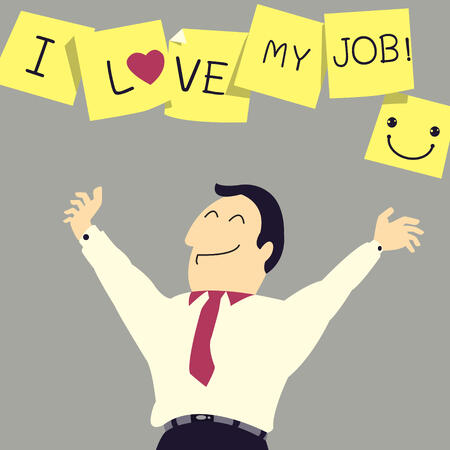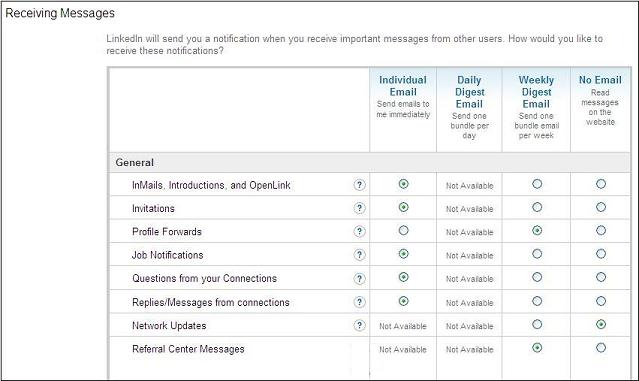WunderBlog



So you've got a great job, you're happy, making good money, you like your co-workers, and if a recruiter contacts you about a job, you immediately dismiss them.
BAD IDEA. VERY BAD.
Why? Because if you haven't learned this already, there are no PERMANENT jobs. No guarantees your company will keep you employed no matter how valuable you are to them today, or even that they will stay in business regardless of how big they are or how long they've been around.
What every worker should have learned during the last 2 years of economic turmoil is that jobs are tenuous, and not to be taken for granted. But mostly you should have learned to be prepared for the worst "just in case" you are laid off, fired, or your company goes under. With a little work now, you'll feel much less frantic if that does happen.
WHAT TO DO RIGHT NOW
LinkedIn:
More and more professional jobs are gotten these days through who you know, and who your acquaintances know, than through answering help wanted ads. You know more people than you think - just take a trip down memory lane and think about all the co-workers, clients, vendors and others you have met over the years. Those people could be your ticket to your next job. So even if you're not very socially outgoing and don't like to, or don't have time to, go out to networking events, the least you must do is use LinkedIn like a pro!
Create a complete LinkedIn profile - it's free - and keep it current. It's much more than just another version of your resume, and having a completed profile doesn't make your boss think you're ready to quit, as posting your resume on Monster or CareerBuilder might indicate. It's accepted today that people have LinkedIn profiles for networking, and it isn't frowned upon.
People hire people, not resumes or employment histories. Write your summary as if you were talking about yourself to a friend and not quite as formally as you'd write a resume. Include a good headshot, professionally taken if need be. A photo that is blurry, in which you're making a funny face, or shows you wearing a baseball cap is a no-no (unless you're going to be the Cubs 2015 World Series winning pitcher).
If you want, you can have a downloadable resume as part of your LinkedIn profile by using a free application from Box.net. You'll find this app within LinkedIn if you go to your main page, then click on More, and then the Application Directory link. Any document can be added to your LinkedIn profile, not just a resume, so if you've written business papers or presentations, or have design samples, you can include those too.
If you don't publish your resume, then at the very least you must include some way for a recruiter or HR manager to get in touch with you. Many will not call you at where you currently work, and not every recruiter/HR manager has a professional subscription to LinkedIn (most don't) that allows them to send you an InMail. If you include your email, then at least they can contact you. Here's what my profile looks like:
Notice where my email address is. I made it part of my Professional Headline so everyone can see it. If you want to be contacted, just add your personal email. And I don't get spam by having this shown on LinkedIn, just an occasional email from someone that I'm not interested in - a small price for the ability to be contacted by someone I might definitely want to hear from.
If you don't have an email listed, will they take the time to Google you to try to find your Facebook page or Twitter account, or a listing in the white pages? Truth be told, I know of very few HR managers who will take the extra time to go online (except girl-detective wanna-be's like me) and try to dig to find a way to email, Tweet or call someone. When they are faced with a potential candidate list of over 500 people, they may just move on to the next person. So make it easy for them to contact you.
If you don't plan on visiting your LinkedIn account frequently, then make sure to set your email receipt preferences so you will receive an email if someone contacts you. This is what the settings page looks like in LinkedIn for you to receive email notifications:
Once your LinkedIn profile is complete, it's time to build it up by connecting with everyone you know (and respect) on both a professional and personal basis. I added the word 'respect' because who you are connected with often reflects, good or bad, on you.
LinkedIn lets you import email contacts from your personal email account and from Outlook and others like ACT, or use their search feature to find people you currently or used to work with or went to school with. Invite everyone you can think of to link with you. One of the reasons you want to have a large network is for that rainy day when you DO need a new job... if your network is large, it's easier to connect with potential hiring managers.
Should you accept invitations from strangers (and you will get them)? That's debatable and there are no right or wrong answers. Some might want to connect with you solely to send you sales emails, while others are just blindly trying to build up their network. I recommend reviewing each person's background before deciding... if they are in the same line of work or the same industry, or an HR person or recruiter, they might be someone you'd like to know. So go ahead and link with them, but take the time to email them and strike up a conversation.
Lastly, ask for recommendations from your LinkedIn connections! No, it's not like shopping for compliments. It's expected, and you'll recipricate so everyone benefits. It's much easier to ask for and get recommendations from people on LinkedIn NOW than after you're out of work.
Your Resume:
Whether you've had your current job for 12 years or 12 months, you should always keep your resume updated and current. Your most recent job usually will contain more detail than older ones, so by keeping it updated while you're still working in that role, it will be easier to remember all that you've accomplished, kind of like keeping a journal of what you did at that company so you don't have to try to recall it 10 years from now during a job interview.
By the way, a resume should be in Microsoft Word format, using a common font like Arial/Helvetica or Times, in at least 9 but no more than 12 point type. It can be up to 3 pages. And if you are sending it to someone in response to a particular job opening, especially if you're applying to an online candidate system, then it must be customized for that job. I cannot stress this enough. Here's why:
Let's say you saw a job posting for a large company and it requires you to apply online. There's a good chance that your resume is about to go into the 'Black Hole', which is what we in the staffing biz often call a company's applicant tracking system or candidate database. The company's system captures the text on your resume, and imports the Word document into their database where it will sit, probably for forever.
Now let's say that this job is a popular one, and you're one of 500 applicants (not uncommon, by the way). The poor HR manager or recruiter is also working on 10 other job openings, each with between 100 and 500 applicants. It's nearly impossible for them to open up each resume and read it entirely, so they rely on searching for keywords via their system - those buzzwords that the hiring manager listed on the internal job requisition as being required or important for that role.
But there's a catch. Many applicant tracking systems return search results in order of how many times those keywords are listed on a resume, so if you're a Web Developer skilled in HTML, CSS and JavaScript and you held 7 full-time or freelance jobs over the last 10 years with that job title and those skills mentioned, your resume will be near the top of the recruiter's search results because of the number of times those keywords are mentioned.
However, if you held ONE Web Developer job for 10 years, and you only mentioned those skills once on the resume, you're going to end up near the bottom of the recruiter's search results of those 500 applicants! Chances are he/she will have found viable candidates to interview way before getting to the bottom of the list, so you're out of luck.
This is what happens when we rely on technology - we lose the human eyeballing of each candidate's resume, and thus perfectly qualified people can be passed by. I don't have a solution to this and if you pepper your resume with keywords too much it's going to look obvious and might get you rejected.
All I will say is that it's best NOT to apply to jobs where your resume goes into a company's database, and instead try to get your resume into the hands of a human who will actually look at it and pass it along to the appropriate hiring manager. That's why networking and tools like LinkedIn are so valuable.
Recruiters Are Your Friend:
One last thing - how to handle emails and phone calls from recruiters if you're not currently interested in a new job.
Make friends with these people! Be cordial, helpful, and most importantly, stay in touch with them via LinkedIn or some other method. They are obviously interested in you or in the line of work you do, so if you do lose your job or decide to move on later, they'll be at your fingertips to contact for help.
So that's my advice - build your LinkedIn network (I've read that 70% of recruiters use it, and 45% use it exclusively to find candidates and these numbers are growing), keep your resume updated like a journal of your accomplishments, and never ignore a recruiter or headhunter.

WunderLand Group is your go-to partner for marketing, creative, digital and sales enablement service, and the employer of choice for creative and digital specialists.
© 2023 WunderLand Group